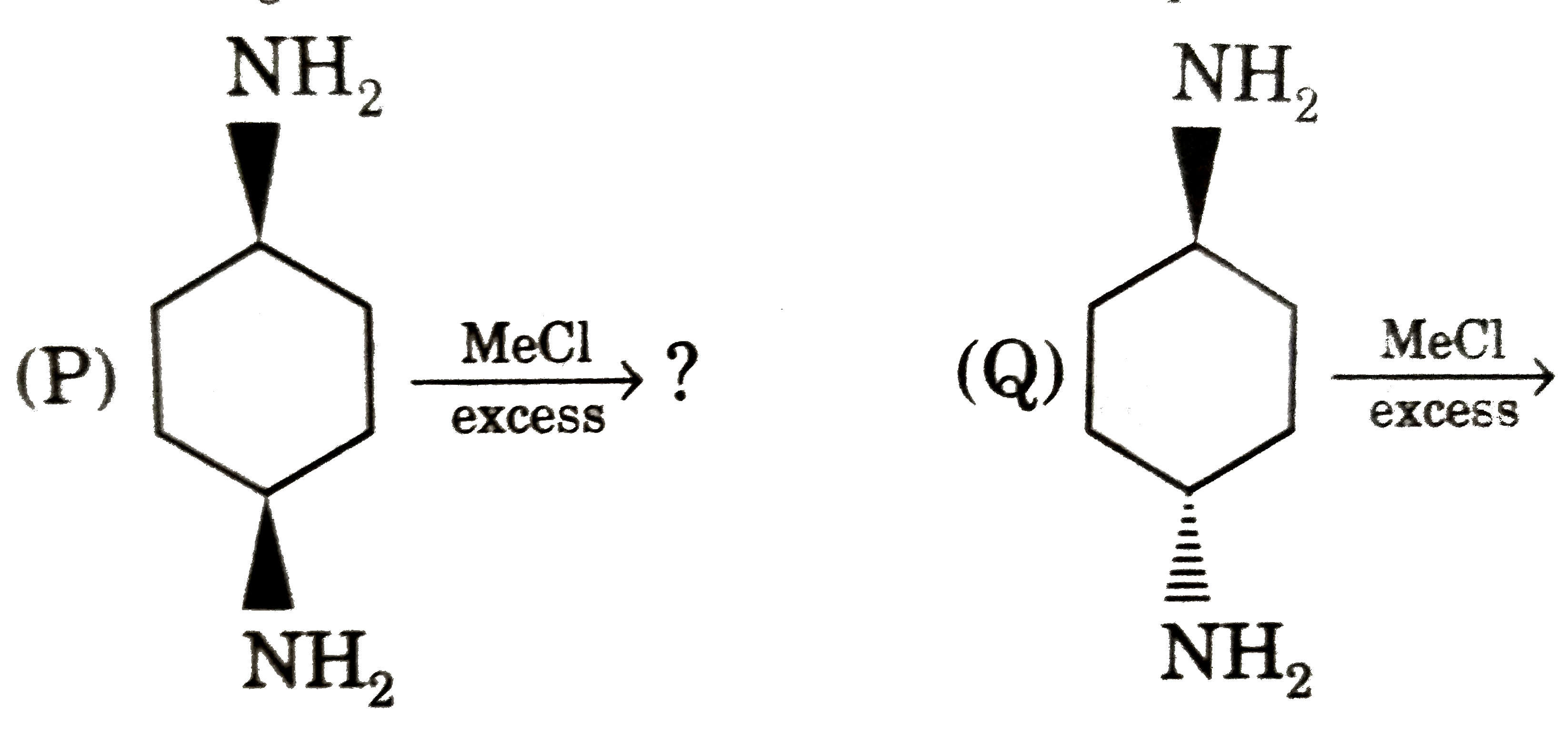The order of decreasting rate of reaction with ammonia is
Anhydrides, esters, ethers
Anhydrides, ethers, esters
Ethers, anhydrides, esters
Esters, ethers, anhydrides
To determine the order of decreasing rate of reaction with ammonia among anhydrides, esters, and ethers, we need to analyze the electrophilicity of the carbonyl carbon in each functional group. The more electrophilic the carbonyl carbon, the faster the reaction with ammonia will occur, as ammonia acts as a nucleophile.
1. Identify the Functional Groups:
- We have three functional groups to consider: anhydrides, esters, and ethers.
- Anhydride: R-C(=O)-O-C(=O)-R
- Ester: R-C(=O)-O-R'
- Ether: R-O-R'
2. Understand the Role of Ammonia:
- Ammonia (NH3) acts as a nucleophile due to its lone pair of electrons.
- It will attack the electrophilic carbon of the carbonyl group (C=O) in these compounds.
3. Analyze Electrophilicity:
- Anhydrides: The carbonyl carbon in anhydrides is highly electrophilic due to the presence of two carbonyl groups. This results in a higher positive charge density, making it more susceptible to nucleophilic attack.
- Esters: The carbonyl carbon in esters is less electrophilic than in anhydrides because the lone pair of electrons on the oxygen atom can participate in resonance, reducing the positive charge density on the carbonyl carbon.
- Ethers: Ethers do not have a carbonyl group and are generally unreactive towards nucleophiles like ammonia. Therefore, they do not participate in reactions with ammonia.
4. Order of Reactivity:
- Based on the analysis of electrophilicity:
- Anhydrides > Esters > Ethers
- This means that anhydrides react the fastest with ammonia, followed by esters, and ethers do not react at all.
5. Final Answer:
- The order of decreasing rate of reaction with ammonia is:
- Anhydride > Ester > Ether
- We have three functional groups to consider: anhydrides, esters, and ethers.
- Anhydride: R-C(=O)-O-C(=O)-R
- Ester: R-C(=O)-O-R'
- Ether: R-O-R'
- Ammonia (NH3) acts as a nucleophile due to its lone pair of electrons.
- It will attack the electrophilic carbon of the carbonyl group (C=O) in these compounds.
- Anhydrides: The carbonyl carbon in anhydrides is highly electrophilic due to the presence of two carbonyl groups. This results in a higher positive charge density, making it more susceptible to nucleophilic attack.
- Esters: The carbonyl carbon in esters is less electrophilic than in anhydrides because the lone pair of electrons on the oxygen atom can participate in resonance, reducing the positive charge density on the carbonyl carbon.
- Ethers: Ethers do not have a carbonyl group and are generally unreactive towards nucleophiles like ammonia. Therefore, they do not participate in reactions with ammonia.
- Based on the analysis of electrophilicity:
- Anhydrides > Esters > Ethers
- This means that anhydrides react the fastest with ammonia, followed by esters, and ethers do not react at all.
- The order of decreasing rate of reaction with ammonia is:
- Anhydride > Ester > Ether
Topper's Solved these Questions
- ALDEHYDES, KETONES & CARBOXYLIC ACIDSBOOK - NARAYNACHAPTER - ALDEHYDES, KETONES & CARBOXYLIC ACIDSEXERCISE - EVALUATE YOURSELF -1
8 Videos
- ALDEHYDES, KETONES & CARBOXYLIC ACIDSBOOK - NARAYNACHAPTER - ALDEHYDES, KETONES & CARBOXYLIC ACIDSEXERCISE - EVALUATE YOURSELF -2
8 Videos
- ALCOHOLS, ETHERS, PHENOLBOOK - NARAYNACHAPTER - ALCOHOLS, ETHERS, PHENOLEXERCISE - Assertion Reaosn
10 Videos
- AMINES & DIAZO COMPOUNDSBOOK - NARAYNACHAPTER - AMINES & DIAZO COMPOUNDSEXERCISE - Subjective type Q.
13 Videos
Similar Questions
Knowledge Check
The order of decreasing ease of reaction with ammonia is
AAnhydrides, esters, ethersBAnhydrides, ethers, estersCEthers, anhydrides, estersDEsters, ethers, anhydridesThe order of decreasing ease of reaction with ammonia is
AAnhydrides, esters, ethersBAnhydrides, ethers, estersCEthers, anhydrides, estersDEsters, ethers, anhydridesThe order of decreasing ease of reaction with ammonia is
Aanhydrides, esters, ethersBanhydrides, ethers, estersCethers, anhydrides, estersDesters, ethers, anhydrides.
The correct order of rate of Wurtz reaction.


View SolutionAssertion : The decomposition of gaseous ammonia on a hot platinum surface is a zero order reaction at high pressure.
For a zero order reaction the rate of reaction is independent of initial concentration.
View SolutionThe rate constant for a zero order reaction is
View SolutionThe rate constant for zero order reaction is
View SolutionCorrect order of rate of reaction of MeMgBr will be :
View Solution

